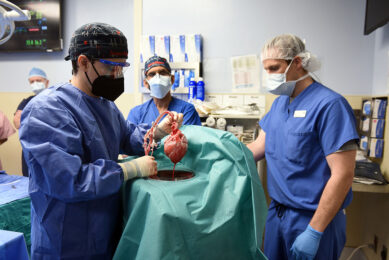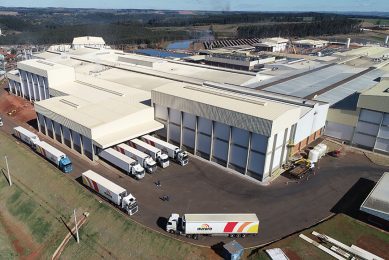Column: Keeping disease out of the farm (I)

John Gadd: “Disease costs a lot of money, much of these costs are hidden in subclinical disease.”
Last month I outlined disease from the farmer’s point of view. I now wish to cover the latest advice on four critical management areas:
- Keeping disease out of the farm;
- What to do should it gain a hold;
- The growing awareness of the vehicle vector;
- What can be learnt from an ideal disease-defending farm layout.
Two points before I start…
Discussing the basics
Some experienced producers will already be well aware of the advice in the first two points above. But there is a lot of new advice for these experts too in the latter two subjects I intend to discuss. So why go over subjects 1 and 2 again? I still visit many units and with respect, some of them in what I call the ‘middle-third’ downwards (in performance terms) need reminding of the evidence as to why these basics are important and what failing to meet them is costing them. And frankly, disease is the reason they are not in the top third.
The econometrics of disease
My second point concerns this journal. It is very widely-read; I see copies in many farm offices and rest rooms. It keeps you well up-to-date with developments in disease control, invariably in authoritative, well-written articles. But they can be a bit lengthy and so may not be fully absorbed by busy people. And while the authors are sound on the science and in showing results in physical performance terms, they tend to stop short of what I call ‘econometrics’ which is defined as ‘the measurement of cost-effectiveness’. (I think I can claim I invented the term over 40 years ago, but I am not sure of this – however I was certainly the first to start using it in pig production).
But disease does cost a lot of money; much of this cost lies hidden in subclinical disease, a cost I reveal when the information is available. It seems particularly applicable to the advice given in point 2 above, a major part of which concerns getting the pigs better as quickly as possible. I find the ‘top thirds’ do this well – the middle and bottom thirds do not.
So… Let’s discuss how to keep disease out. These are not in order of importance. Disease arrives from:
Other pigs
From replacement stock and the proximity of other pigs, such as using a neighbour’s boar and equipment or having neighbours too close. With regard to the first, ‘Don’t’ … As for the latter use a pig vet to advise on vaccine protection and other protective strategies. It is now essential, not just ‘advisable’ as it was in the past, only to buy replacement stock and semen from reputable sources which can provide stock or supplies with a disease history and list of protective treatments given to the output herd.
So as to reduce the effect of weakening the immunity barrier of your existing stock and reducing the drag on performance from sub-clinical infection, it is most advisable that your own veterinarian should be able to compare your own level and pattern of disease to match the profile of the incoming pigs. Both vets, yours and the suppliers, should talk to each other, which allows your vet to set up what additional precautionary measures (management/drug/vaccine) he considers wise when the stock arrives. Yes, it can cost a bit (not always) but evidence from two specialist veterinary practices suggest that even so, the estimated payback is around 6 to 1, comparing two years before with three years after the change, all due to better performance.”
Induction, quarantining and feedback
Not fully understanding concepts like ‘induction’, ‘quarantining’ and ‘feedback’. All three are big subjects in themselves. Your pigs have a disease profile and so do any replacement animal, the effect being magnified the larger the input batch. This is quite normal. The solution is to merge the two profiles together gradually over a period of time, which may be long or short. The textbooks go into much detail, so forget it and leave it to your veterinarian who will advise you on which of the three are needed, if any; then how much, how long, what to do and when. He is on the spot – a textbook isn’t, necessarily. Do not listen to friends who helpfully tell you what works for them. Their farms and disease profiles will be quite different to yours, so let your vet decide what is best for you.
One farm policy which is universally helpful is to establish a gilt pool where the induction process can be more easily controlled. Yes this costs too in set-up capital, but I have written at length on the econometrics which have always been favourable (from less disease and a longer herd life), so whether converting existing buildings or creating a whole new farm sector – just do it, it pays.
Further reading:
Keeping disease out of the farm (III)
Keeping disease out of the farm (II)
Article featured in Pig Progress 31.2 – to read more printed articles see our digital magazine











